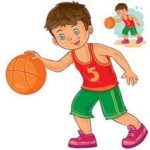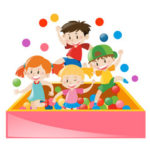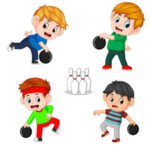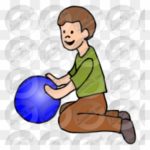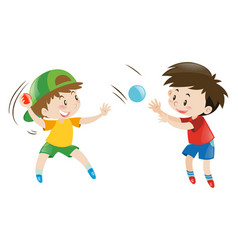
by Neetu | Jun 25, 2020 | Fitness Activity
Purpose of Activity
This activity will give children the opportunity to practice the skill of throwing overhand. At this developmental age, children should focus on throwing hard at the target. This will enable children to go through the full range of the throwing motion and assist them in “stepping with the opposite foot” when they throw. Stepping with the opposite foot when throwing is an important part of demonstrating a mature throwing pattern.
Equipment Required
A yarn ball, Koosh, or beanbag is most appropriate for this activity inside, a plastic ball, or a tennis ball outside. Make sure the ball or beanbag is the size that will easily fit into the child’s hand. Beanbags or yarn balls are best if inside a building as they will not roll away from the children. A small plastic ball can be used outside in a grassy area where there is less chance for the ball to roll away from the child.
Description
Conduct this activity in a large indoor open space such as a gym or multipurpose room where there is a large wall (free of obstacles) to throw at or a large open outdoor space. Ask children to pick up a beanbag and place it in the hand they are going to use to throw (this should be the same hand they write with). “Bend your elbow up and hold the beanbag behind your head, step forward with the opposite foot, and throw the beanbag as hard as you can.” If inside children should be directed to throw hard at the wall. If outside, ask that they throw as far (or hard) as they can into the open field. Teachers may want to place cones or markers in the field so that children have a large target to throw toward. Remember to stress the cues “throw hard” and “step with the opposite foot.” The throwing skills of young children will vary greatly. Some children may want to get close to the wall while others will need the challenge of being farther away. While this activity seems very simple it is an important foundational first step activity for young children learning how to throw.
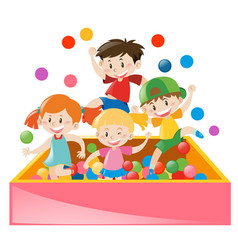
Note: If children are having trouble stepping forward when they throw, place a tape line, jump rope, or chalk line on the ground and ask that children step over the line when they throw. This will help them begin to develop the opposite foot stepping pattern.
Variations:
As children get the basic concept of throwing hard while stepping with the opposite foot use targets to challenge them to keep practicing. Use large targets indoors such as painting a target on a large sheet and then attaching to the wall. Outdoors, Provide a restraining line for children to stand behind and ask that they throw over another line that is 20 to 30 feet away. Provide a line that is closer to those that cannot throw as far.
Teaching Suggestions:
With young children, it is important to participate in throwing activities that are both fun and success-oriented. Research tells us that children need to be successful about 80% of the time to stay on task, to avoid frustration, and to have the best opportunity to develop skills. Children, who consistently miss the target when they throw, may get frustrated and not practice. Throwing activities must be success-oriented in order that children will have the opportunity to develop the skill. The best beginning throwing activity is to simply ask children to throw hard. This allows children to naturally step with their opposite foot when throwing and assists in the development of a mature throwing pattern.
Adaptations for Students with Disabilities:
Many children with special needs may not be able to step when throwing. Ask these children to throw as hard as they can and make sure they have the opportunity to stand as close to the wall or target as needed.
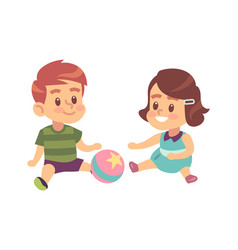
by Neetu | Jun 25, 2020 | Fitness Activity
Activity
Let the child sit in their personal space.
Give the foam ball each to the kids.
Tell them to keep the ball on their lap when they are sitting down.
Exploration 1: –
Explain the shape of the ball and let them feel it.
Explain to them also the color of the ball.
You can ask them which fruits resemble the shape of the ball?
Exploration 2: –
Ask the kids to place the ball in various directions and levels
- placed it above your head
- Placed it over the knees
- Placed on the right side of the body
- Placed it on the left side of the body.
Exploration 3: –
- Ask the kids to roll the ball around their home base.
- Ask the kids to leave their home base rolling the ball in the general space.
Exploration 4: –
- Let the kids face each other and roll.
- Ask the kids to roll the ball to their partners.
Debriefing: –
Ask about what we have done today.
Put music and do a mild stretching.
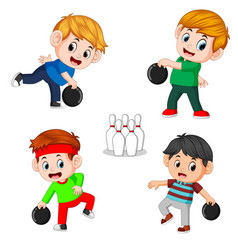
by Neetu | Jun 24, 2020 | Manthan
Aim
To have students practice the underhand motion of bowling.
Activity cues: “Reach back”, “Arm close to the side of body”, “Step with the opposite foot”
Equipment Require
Plastic 16-20 oz. bottles or bowling pins, Small foam balls, Poly spots
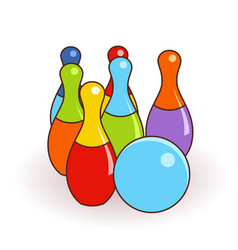
Description
Young children get excited about knocking bowling pins over with a ball. They have very little concern about scoring or other competitive aspects of the formal game. Here are ways to present the activity and two ways to organize the pin set-up.
- Related to both pin setup and presentation
In a traditional sense, the teacher can show children how to set up pins in a conventional manner. Ask them to count the number of pins in each row. First row “1,” second row “1, 2,” third row “1, 2, 3,” and fourth row “1, 2, 3, 4”; then confirm that there is a total of ten pins by counting them all. This integrates numeric concepts into the p.e. activity. If the teacher has placed small round stickers on the floor, younger students will have an easier time putting pins in the same arrangement each time.
In order to maximize participation, this would need to be presented in the context of a number of throwing stations. Otherwise, the teacher would need a lot of pins and balls to keep the group size small.
- Pin setup
As an alternative, ask students to design their own pin arrangements and see how the different arrangements affect the way the pins fall.
- Presentation
It is preferable that students work in small groups in order to maximize participation. For example, there might be one student bowling while one or two others set up the pins. Students rotate positions. Since the emphasis is on the underhand throw, (as opposed to the number of pins knocked down), the teacher might use less than ten pins in order to accommodate multiple stations. Very young children will perceive a challenge when throwing at maybe 3 pins from an appropriate distance (appropriate distance maybe 5-7 giant steps away from the roller of the ball and it should not be a regulation size bowling alley length). And, preschoolers can still experiment with various pin arrangements even with only three pins.
For either presentation, each time the students set up their pins, they should return to a poly spot on the floor to make their underhand throw. Initially, the teacher should place more emphasis on the arm swing than other aspects of the throw. The arm swing should begin with a “reach back”, swing forward “close to the body”, and release the ball at a low level (“no bounce”) (remembering to give only one cue at a time). “Step with the opposite foot” may be an appropriate cue only for students who are more developmentally advanced.
Teaching Suggestions:
- For students that easily knock down their pins, challenge them to move their spot back a step after each successful underhand throw.
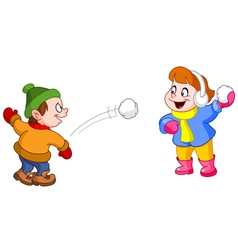
by Neetu | Jun 24, 2020 | Fitness Activity
Aim
This activity will give the students the opportunity to learn and practice the overhand throw at a target.
Activity cues: Depending upon the skill level and experience of children use appropriate throwing cues (see PE Central throwing cues
Equipment Requipme
Cut snowman targets from large sections of cardboard and decorate by having students draw and paint on the cutouts. Tape snowmen on wall Plastic grocery bags (rolled into balls and taped) are used for snowballs. Use a restraining line, such as a jump rope, to keep students about 5’away from the target.
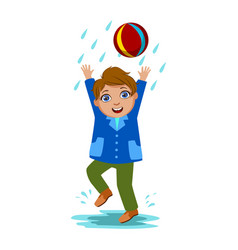
Description
This activity brings the fun of throwing snowballs inside where it is warm, and no one gets cold! Students throw the “snowballs” at the snowman to see if they can hit different parts of the target.
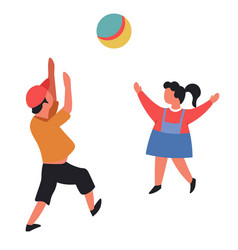
by Neetu | Jun 24, 2020 | Fitness Activity
Aim
To provide young children with the opportunity to develop catching skills using a launch board.
Equipment Require
A launch board and a small ball, beanbag, or beachball for each child.
Description
A great way to help young children achieve catching success is to use a launch board. When a child steps on one end of the board a beanbag on the other end flies into the air directly in front of the child. This gives the child a better opportunity to catch the object.
Teacher Instructions
“Place your beanbag on the low end of the board. Go to the other end, get your hands ready to catch by holding them out in front of you, then raise your foot and stomp at the end of the board. As the beanbag flies into the air in front of you, clasp your hands around the beanbag and catch it. You may also want to hug the beanbag to your body”
As children get better at catching they can be challenged with more difficult tasks. “See how high you can make the beanbag go and still catch it.” Or, “See how many times you can clap your hands while the beanbag is in the air and still catch it.”
Teaching Suggestions
Most children, at first, will have trouble coordinating the acts of picking up the foot and stomping on the board. They may stomp in the wrong place or miss completely. It helps to have them practice this without an object first
These make a lot of noise so either put felt on the bottom of both ends or tell your classroom teachers to wear earplugs!!










